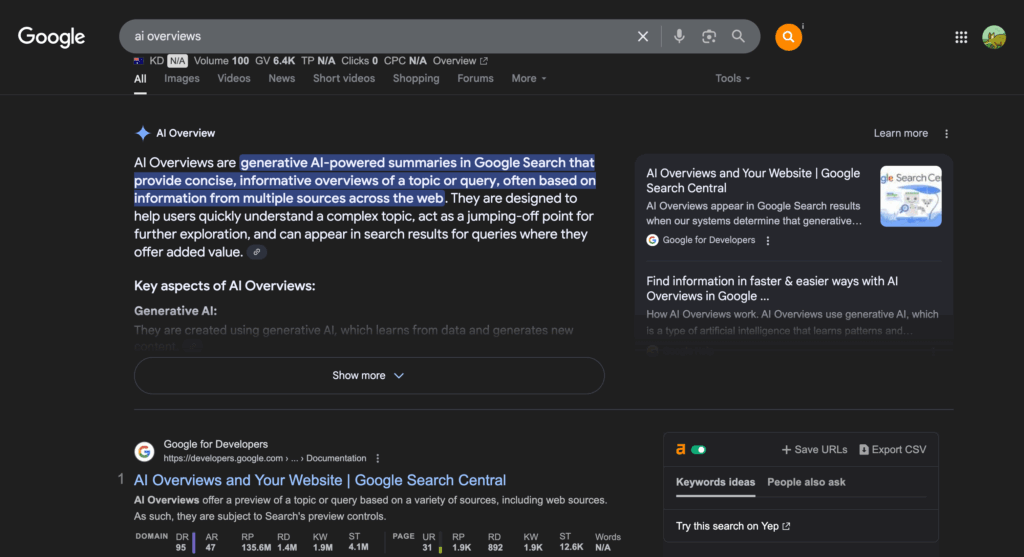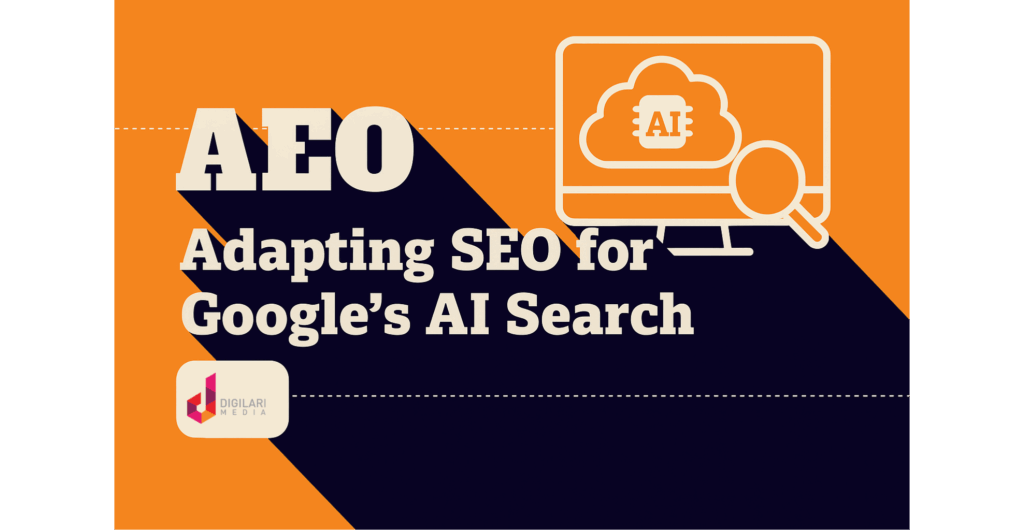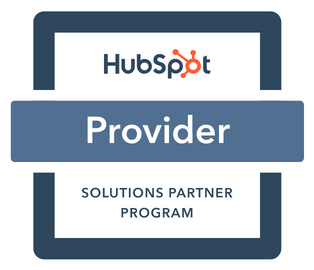The introduction of Google’s AI Overviews and the new AI Mode represents a significant evolution in how users interact with search results. This evolution necessitates a re-evaluation of traditional SEO strategies and a focus on adapting to new user behaviours. This guide summarises the key changes observed and outlines how SEO professionals should adjust their efforts.

Changed User Behaviour in AI Search
A primary change in user behaviour is the rise of “zero-click” search results facilitated by AI Overviews. AI Overviews provide synthesised answers directly on the search results page, often allowing users to get the information they need without clicking through to a website. This can happen, for example, when a user is comparing products and having a conversation with the AI, which pulls and references information from various sources without sending the user to those sites.
Users engaging with AI in Search are also asking longer, more complex, and often multimodal questions. They are inclined to use follow-up questions to dig deeper into topics. While this interaction can lead to increased search usage for these types of queries and higher user satisfaction, the resulting click volume and click-through rates are reported to be down. This decline in clicks, coupled with historically high Cost Per Clicks (CPC), is impacting ROI and making it harder for businesses to find organic traffic.
A critical consequence of zero-click interactions is the loss of visibility into mid-funnel user behaviour. The data revealing how users research and compare options during the consideration phase is diminished because these conversations occur within the AI interface. This lack of data hinders content strategy planning, as marketers lose insight into the specific questions and comparisons users are making.
Adapting Your SEO Strategy
To succeed in this evolving landscape, SEO professionals must pivot their strategies:
1. Move Beyond Keyword-Centric Optimisation
The traditional model based primarily on keyword data is becoming less effective. Instead, focus on topical coverage and addressing the types of questions users might ask about your products or services. Optimising for question-and-answer formats, perhaps structured as FAQs, aligns better with the conversational nature of AI search.
2. Emphasise High-Quality, User-First Content
As always, the foundation for success is creating unique, helpful, and satisfying content for your target audience. Given that AI search users ask specific and complex questions, providing thorough, detailed content is especially important.
3. Maintain Technical Excellence and Page Experience
Ensuring Google can access, crawl, and index your content by meeting technical requirements is non-negotiable. Equally crucial is providing an excellent page experience – mobile-friendly design, fast loading speeds, and clear layout – for the users who do click through from AI or classic results.
4. Integrate Multimedia Content
With Google’s AI supporting multimodal searches (like searching with images), incorporating high-quality images and videos that support your text content is increasingly valuable. Ensure relevant business information, such as Merchant Centre data for e-commerce, is up-to-date for visual search results.
5. Re-evaluate Success Metrics
Relying solely on click-through rates may be misleading. Clicks from AI Overviews are suggested to be of higher quality, leading to more engaged users on site. Focus on broader conversion indicators like sales, signups, and overall user engagement. Visibility (impressions) may also become a more important metric for gauging organic presence in the zero-click environment.
6. Utilise Content Preview Controls
Be familiar with and use meta tags like nosnippet, data-nosnippet, max-snippet, and noindex to manage how your content may appear in AI experiences. Be mindful that more restrictive controls limit visibility.
7. Use Structured Data Appropriately
Structured data helps Google understand your content and can make it eligible for enhanced display features in AI search. Ensure your structured data is accurate and matches the content visible on your page.
Conclusion
The advent of AI Overviews and AI Mode represents a significant shift, impacting user behaviour and traditional SEO metrics. By focusing on user-centric, comprehensive content that answers potential questions, ensuring technical soundness and great page experience, embracing multimedia, and broadening the scope of success metrics beyond just clicks, SEO professionals can effectively adapt and uncover new opportunities in this evolving search landscape.




